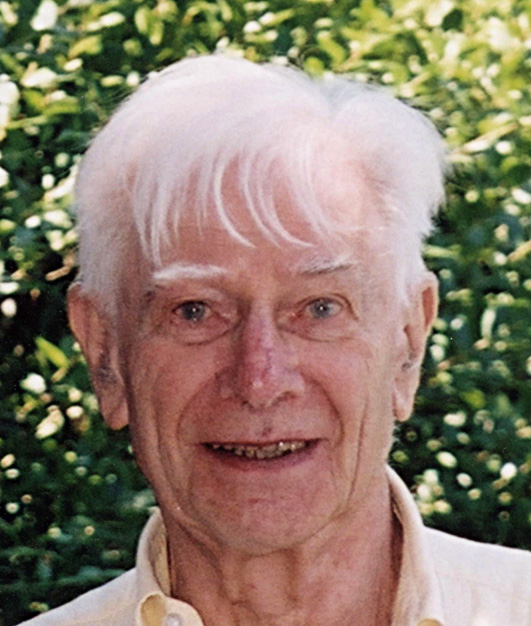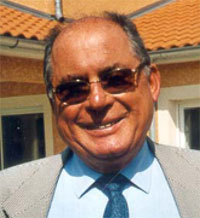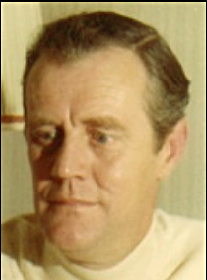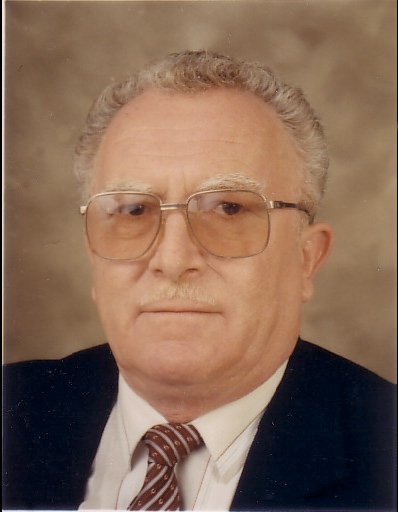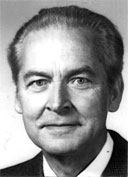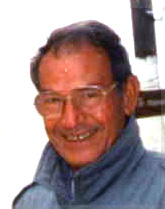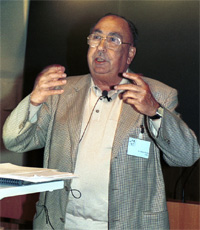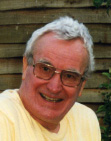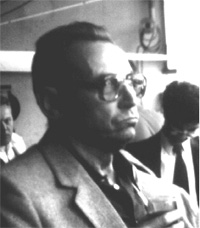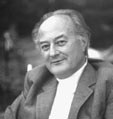Gordon Lennox Munday was born in Birmingham in 1922. During the second world war he served in the Home Guard. After the war he worked for Philips, then he went to the University of Birmingham where he obtained a degree in physics and chemistry.
In 1955, on the recommendation of a physicist friend, he joined the team that built the PS, the CERN Proton Synchrotron, under the guidance of John Adams. He was responsible for building the vacuum system of the future accelerator.
Shortly after this new machine was started up, Division Leader Pierre Germain entrusted him with the task of creating a group that would support the physicist users to prepare and implement their experiments. It was his team that managed the experimental zones, designed, implemented and operated the beams on which the physicists installed their experiments.
A third phase of his career starts in 1973 when he succeeds Peter Standley at the head of the MPS Division (Machine PS). Under his leadership the PS, initially designed to produce and accelerate protons and secondary particles for dedicated experimental zones, was transformed into a machine with multiple functions, capable of supplying beams adapted to other accelerators and especially able to satisfy the novel needs that nobody had imagined at its construction. The Super Proton Synchrotron (SPS) would be the new large machine of CERN. It is under Gordon’s responsibility that the Antiproton Accumulator (AA) was built, which ultimately would permit the implementation of the ppbar programme, leading to the discovery of the W and Z bosons and to the Nobel Prize for CERN physicists.
Still under his mandate of Leader of the Proton Synchrotron Division, its accelerators were used to produce and pre-accelerate the electrons and positrons destined for the next large machine: LEP.
Finally, and this is probably a less well-known part of his career, Gordon ordered the meticulous analysis of all operational aspects of the PS and started a programme of development and consolidation. The technical and operational qualities thus established by him ensured a regular operation of the proton-antiproton collider SppbarS and of LEP into the 1990s, well after his departure into retirement. His legacy stretches even further, into the years 2000, with the feeding of protons and ions from the PS into the LHC.
The rôle of Gordon at the PS was not limited to technical and administrative aspects. During his long career he showed the human qualities and understanding towards his collaborators that earned him respect and devotion. He developed and maintained a team spirit amongst the members of his Division that strongly influenced its performance and success.
After his retirement in 1987 he remained close to CERN and its personnel and accepted the rôle of President of the GAC, the Groupement des anciens du CERN. He was their spokesman with the Organization’s leadership and he succeeded in making them take into account the worries of CERN’s retirees under circumstances that are more and more difficult.
His ex-colleagues and friends of the PS.
The GAC-EPA Committee joins them in this tribute.

